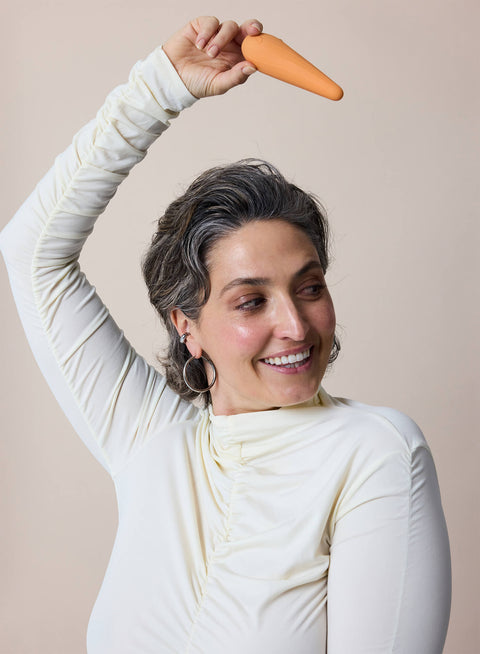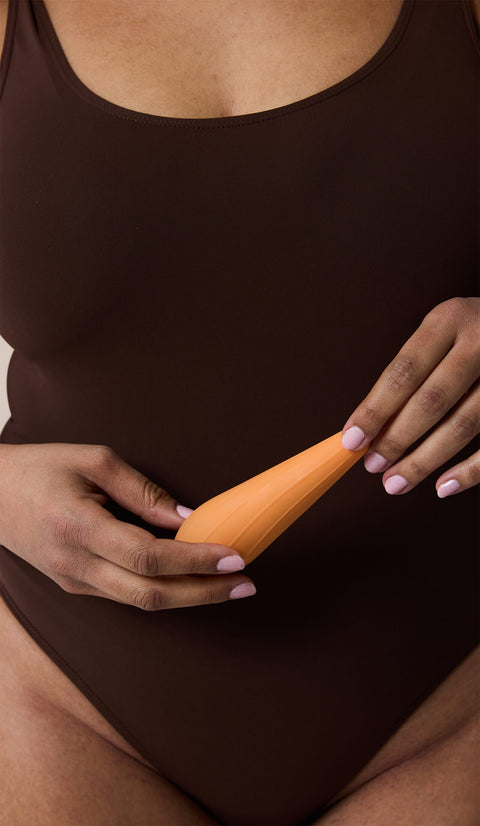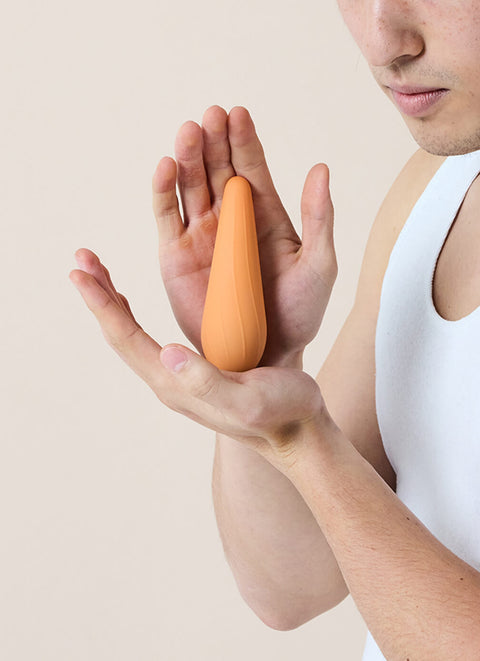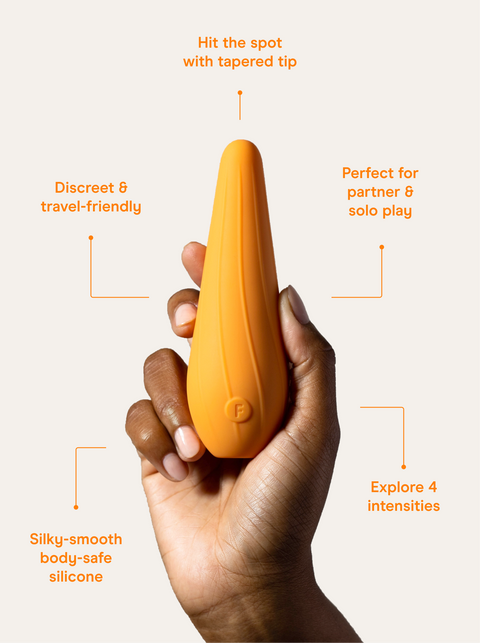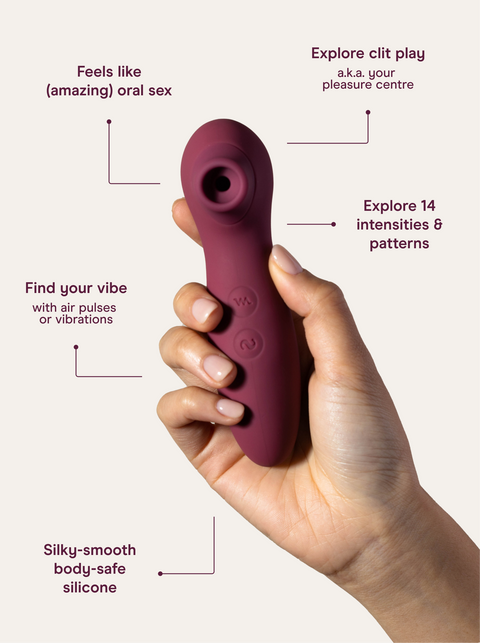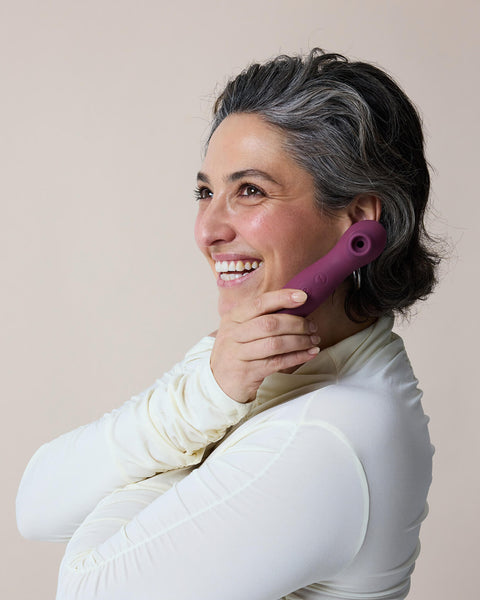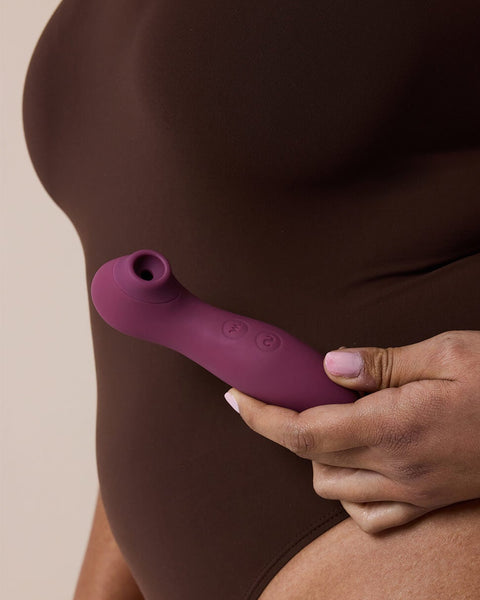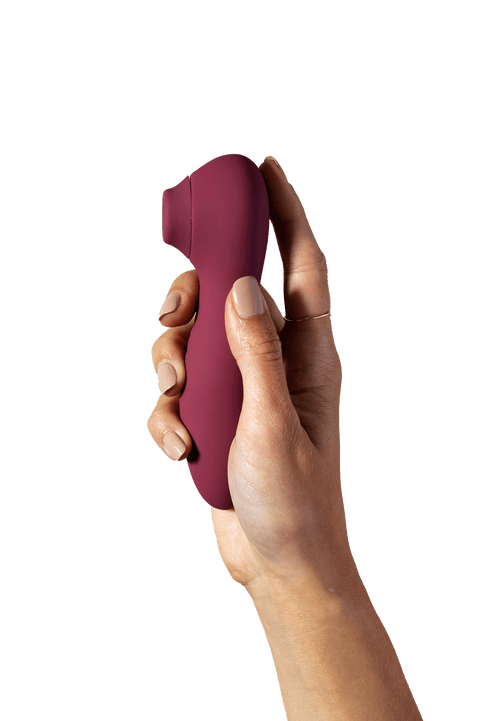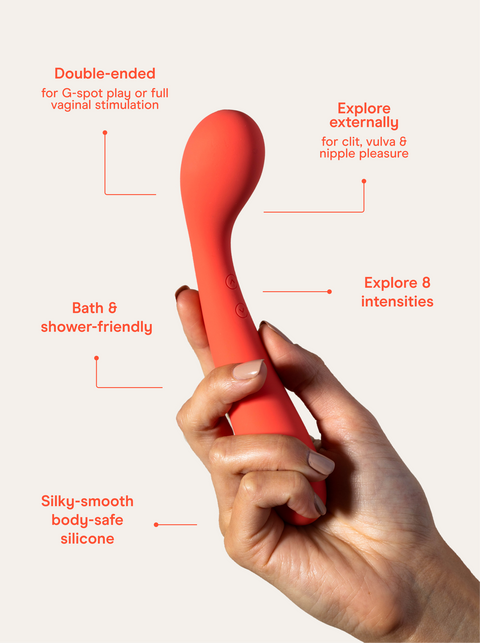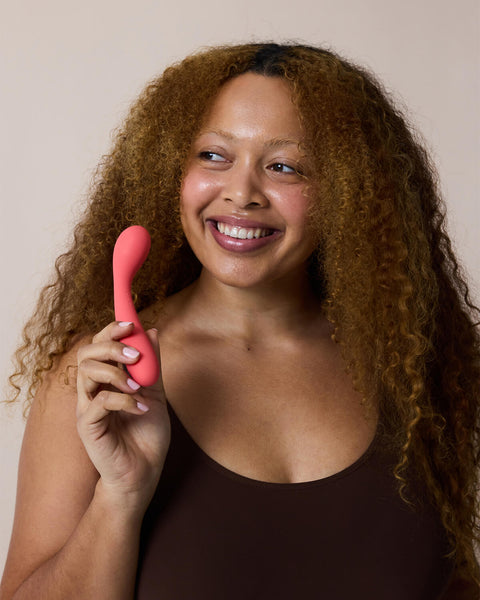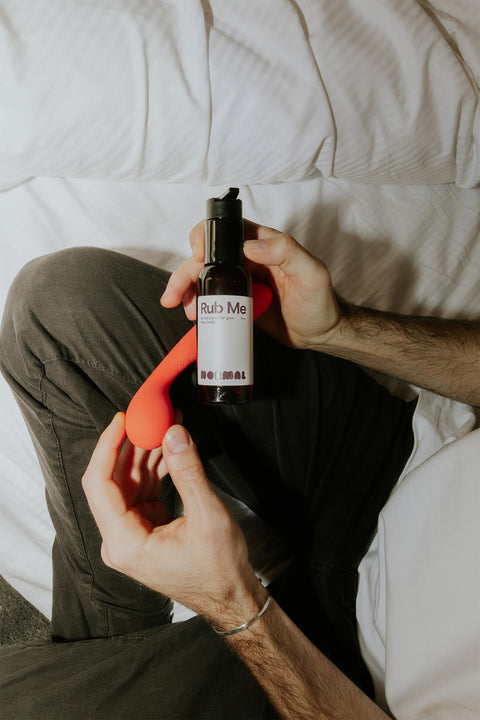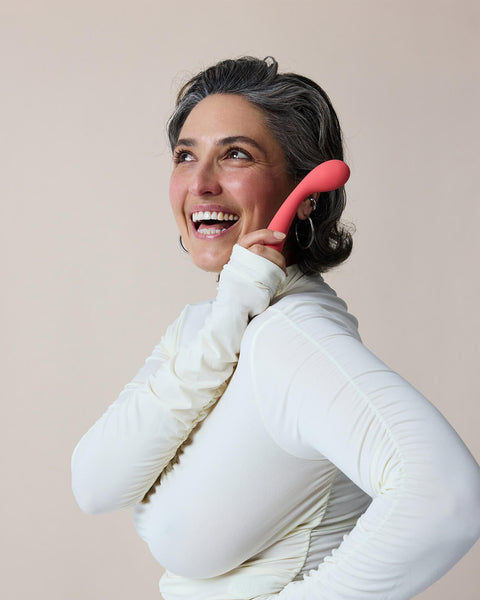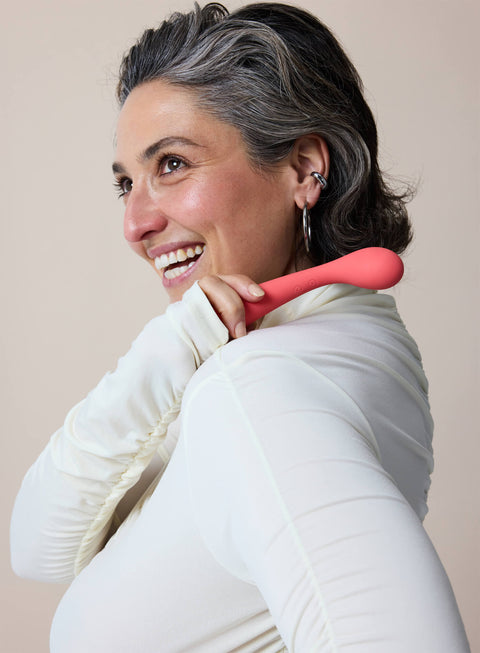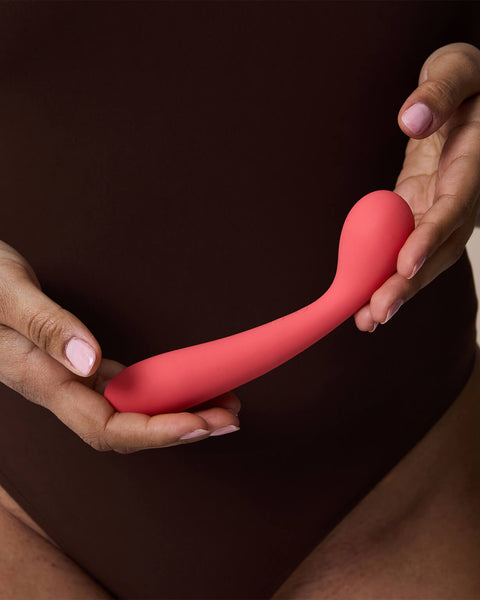If TV, movies, and porn are to be believed, having an orgasm is easy—and having multiple orgasms, one after the other, is pretty simple as well.
We’ve all probably seen it on our screens: two people (often a man and a woman, but not always!) are rolling around in the throes of passion, climaxing again and again and again. Nobody needs to stop and take a break, nobody gets too sensitive to continue, and absolutely nobody ever says, “Hang on, I can only come once!”.
In real life, of course, this is not quite how it works. And while multiple orgasms certainly aren’t impossible—more on that in a second—they can require a little bit more work than simply jumping into bed and having at it.
***
Before we explore how to have multiple orgasms, we need to know a little bit about how orgasm and arousal works.
In the 1960s, researchers William H. Masters and Virginia E. Johnson developed the first model of human sexual response. Their goal was to chart the process from arousal to orgasm in the hopes of understanding more about human sexuality (and yes, if you recognise the names, they are the same Masters and Johnson from the TV series Masters of Sex!).
They suggested that human sexual response has four stages:
- Excitement. This is the first, initial feeling of being turned on that you might experience when your partner touches you a specific way, you see someone really sexy, or you otherwise notice that feeling that says, “Ooh, I’m kinda turned on right now”.
- Arousal. If you engage with that feeling of excitement and allow it to continue, you can experience arousal. This is, basically, a physical response in your body when everything starts to tingle, you’re feeling more sensitive, blood flows to your genitals, and your cheeks are flushed…bottom line, you’re turned on!
- Orgasm. Coming, climaxing, getting off…whatever you call it, orgasms can feel really good!
- Refractory period. This often occurs immediately after we orgasm, and it’s a period during which our body wants to relax before we can come again. During the refractory period, our genitals (and other erogenous zones) might feel sensitive and over-stimulated, we might feel emotional, or we might be tempted to roll over for a quick snooze.
This model was revolutionary for the time, however, it has its limits. It looks good on screen, sure, though many people will identify that arousal doesn’t build in an upward trajectory til they reach orgasm. Sometimes they get distracted, or need to pause, or for some reason they lose their physical arousal - this is all really normal. It also t doesn’t make any allowance for multiple orgasms—in fact, the existence of a refractory period sort of implies that once we’ve come once, it’s not really possible to come again, at least for a little while.
So what’s up with that?
We have two theories.
The first is that we need to redefine our understanding of ‘multiple orgasms’ to mean ‘more than one orgasm in a session, regardless of how long that session is’ rather than, ‘coming over and over again non-stop’. In fact, a scientific paper discussing multiple orgasms in male-bodied people identifies two types of multiple orgasms: sporadic multiple orgasms, when a person climaxes and then climaxes again a few minutes later, and condensed multiple orgasms, when a person climaxes and then climaxes again almost immediately afterwards. For some of us, having an orgasm straight after we’ve already come might be difficult, but it may not be so tricky to climax, take a short break or participate in another sexual activity—like pleasing your partner or giving yourself a sensual massage—and then climax again.
Our second theory is that, simply, every body is different. While it’s commonly understood that almost everyone experiences a refractory period after climaxing, this period can differ wildly in length depending on many factors: a person’s biological sex, their age, and their general physical health, just to name a few. It’s not beyond the realm of imagination to think that someone could have a very short refractory period; so short, in fact, that they can orgasm once and then orgasm again shortly afterwards. Even today, studies of human sexuality remain under-funded and under-resourced: so just because there’s not a scientific formula to explain multiple orgasms doesn’t mean they can’t happen.
So how can you make them happen for yourself?
We’re glad you asked. Of course, we want to be clear that you should never put yourself under pressure to experience sex or orgasm in a specific way, and the most important thing about pleasure is that you’re happy and comfortable in the way that you experience it.
But if you’d like to try for a multiple O, here are our tips.
- Set the scene. We’re big proponents of setting the mood, and for good reason. Put simply, very few of us feel able to relax and get sensual when we’re rushed, stressed, distracted, or hyper-aware of the dirty laundry in the corner or the dishes in the sink. Turn your space into somewhere that helps you feel comfortable and sexy.
- Spend some time on foreplay. You really can’t have enough foreplay! Whether you want to have one orgasm or multiple orgasms, foreplay will help you feel excited, aroused, and comfortable enough to get over the line. If you’re playing with a partner, spend some time getting each other turned on—and if you’re flying solo, you might read some erotica or take a steamy bath or shower to get in the mood.
- Stick to what you know. There’s a time and a place for experimentation, but we’re going to say that if you’re specifically aiming to have multiple orgasms, it might be best to focus on activities that you know will make you climax. This might mean using your favourite toy, asking your partner to go down on you, or getting into your favourite position for penetrative sex.
- Mix it up: once you’ve had one orgasm, it may be too intense to continue stimulating or touching in the same way. So try a new position, use your (or your partner’s) hand, try a new vibrator setting or take a short pause and come back to whatever feels good when it’s less intense.
- Keep consent in mind. If you’re playing with a partner, don’t think that you know better than them about what their body needs or feels—if they ask you to stop, don’t try to keep going in the hopes that you might help a multiple orgasm happen.
- Tune in to your own pleasure. During and after orgasm, try to be aware of the sensations your body is experiencing and what feels good. If it feels right to ‘keep going’ by using a toy, your hands, or being touched by your partner, follow that feeling and see what happens. Alternately, you might feel like you need to mix things up by trying a different form of touch and stimulation.
- If at first you don’t succeed… try, try again. Remember, not everyone climaxes every time they have sex—so rationally, we can’t expect that we’ll have multiple climaxes whenever we want, either. Appreciate your sexual experience for what it was, discuss it with your partner or even write about it in your sex journal, and use that exploration to inform your next attempt at the multiple O.
It’s also worth keeping in mind this 2016 study of female orgasms, the results of which we think are applicable to all genders. The study found that women did not have more orgasms when they increased the frequency of their sexual experiences; instead, the key factors that increased their number of orgasms were communication, self-esteem, and sexual desire.
“A relationship that felt good and worked well emotionally, and where sex was approached openly and appreciatively, promoted orgasms,” wrote the authors, perhaps proving that when it comes to orgasms, quality really does win out over quantity.



